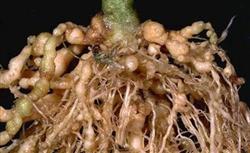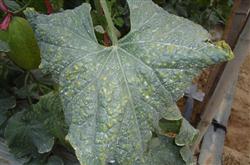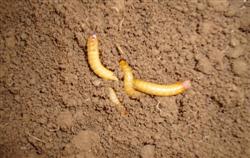How to control root-knot nematode disease in cantaloupe planting?

What harm does Hami melon root knot nematode disease have? How to control root knot nematode disease in hami melon planting? Please introduce prevention and control methods The harm and prevention methods of Hami melon root knot nematode disease are listed below for netizens 'reference. Hami melon root knot nematode disease harm: root knot nematode disease is an important disease of hami melon, occurs in some areas, protected areas, open fields can occur, with the autumn disease is more serious, seedling disease has a great impact on production, after the disease rate often reaches more than 60%, significantly affecting hami melon production. Root-knot nematodes mainly damage root systems, producing many milky-white root-knots of different sizes on taproots and lateral roots, and white translucent pear-shaped root-knot nematodes can be seen when dissected. At the later stage of disease, the color of diseased roots became darker and finally rotted. The color of leaves on the ground of plants or seedlings became lighter with the development of disease, and gradually wilted from bottom to top until all died. Melon root-knot nematode disease causes: root-knot nematodes mainly through infected soil, infected seedlings, watering and agricultural tools, and so on. Nematodes reproduce rapidly at soil temperature of 20-30℃ and humidity of 40%-70%, and easily accumulate in soil. General terrain high, loose soil, and lack of water and fertilizer plots or shed occurred heavier, usually greenhouses heavier than greenhouses, greenhouses and heavier than open fields. In addition, continuous cropping disease is heavier. The method for preventing and controlling Hami melon root-knot nematode disease comprises the following steps of: firstly, adopting disease-free soil for seedling cultivation, selecting insect-free soil or field soil for seedling cultivation in disease frequent occurrence areas, applying organic fertilizer without diseased bodies or fully decomposed organic fertilizers, and also using substrate for seedling cultivation, and paying attention to preventing artificial transmission. Method 2. Deep ploughing of soil 30-50cm before planting can be carried out in late spring and early summer for sunlight high temperature disinfection and pest control. After pulling seedlings of previous crop, quicklime and broken straw are applied respectively at 4.5-7.5t/hm2, then the soil is ploughed and mixed evenly, then the furrow is dug, the ridge is formed or the ridge is made, the soil is filled with water, the plastic film is covered and compacted, and the shed is closed for 10-15 days, so that all nematodes, germs and weeds in the soil can be killed. After treatment, biological fertilizer should be added. Method 3. Apply benzophor to seedbed with seeds during sowing or planting, and use 10% granules 2000 kg per mu. Method 4: evenly spreading or furrowing miraphos in 20cm topsoil, covering soil immediately after application, watering, sealing or covering film for 7-12 days, loosening soil and releasing air for 3-10 days, and then sowing or planting. Click for more Hami melon growing techniques Click for more fruit growing techniques
- Prev

How to prevent and cure the brown spot of Hami melon?
What harm does cantaloupe brown spot disease have? How to prevent and cure the brown spot of Hami melon? Netizens are also asked to help introduce the harm and control methods of cantaloupe brown spot disease through the farming network, which are listed in detail below for netizens' reference. What are the hazards of cantaloupe brown spot: Brown spot is a common disease of Hami melon.
- Next

What are the sugarcane pests?
What are the sugarcane pests? How to effectively prevent and cure it? Also ask the netizens who know to help introduce the main pests of sugarcane during the whole growth period, including root pests, foliar pests and stem pests. The farming network has sorted out the control methods of these three kinds of pests, which are listed below for netizens' reference. Sugarcane root damage.
Related
- Moge, come on! The staff of the peasant association in the producing area of cantaloupe were frightened when the crowd gathered.
- Causes and Solutions of low Fruit setting rate of Apple
- Symptoms and control measures of passion fruit virus disease
- Fruit growing lesson: how do apple orchards keep high yields?
- Can you build orchards in the mountains? What are the pros and cons?
- How to manage the coloring period of Crisson grape?
- This paper introduces the processing technology of two kinds of fig products.
- How much is a month for retired teachers in rural areas by 2020?
- How can strawberry planting increase sugar content? We should pay attention to management in many aspects.
- What are the cultivation techniques on how to improve the yield of golden fruit?

